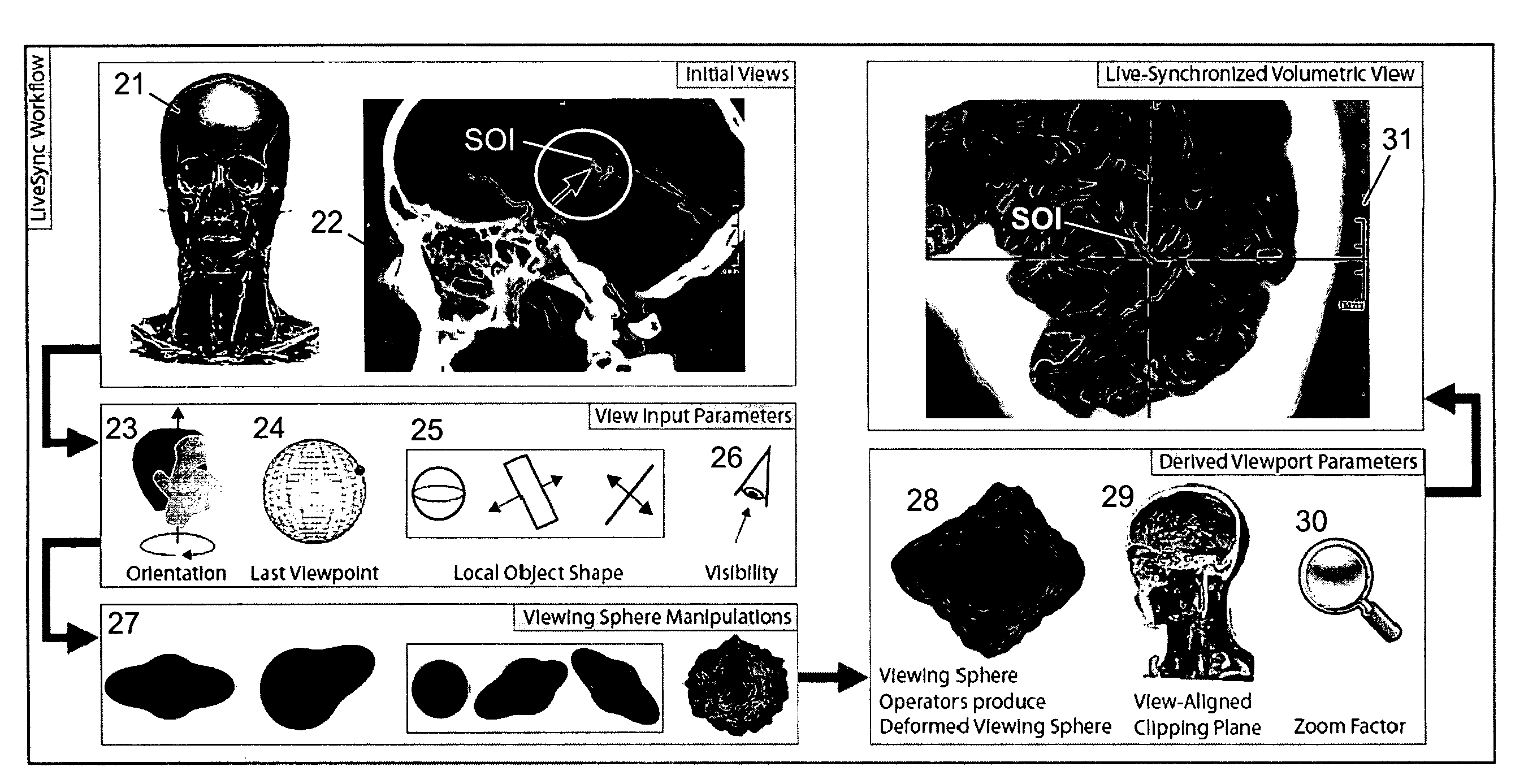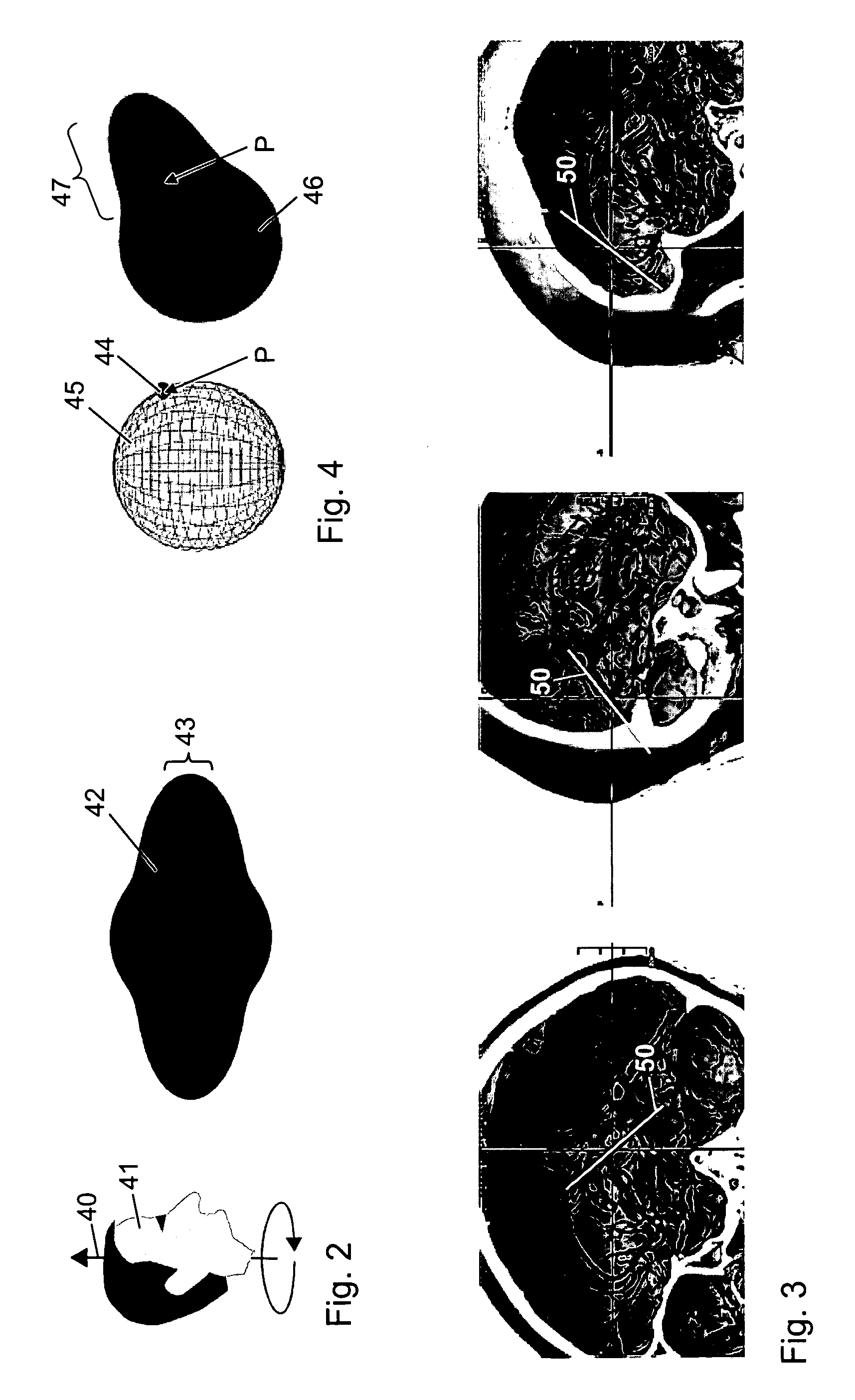Method and Apparatus for Volume Rendering of Medical Data Sets
a technology for medical data and volume rendering, applied in the field of method and apparatus for volume rendering of medical data sets, can solve the problems of time-consuming and complicated adjustment of viewport parameters, and achieve the effect of reducing the difficulty of adjusting the viewport parameters and reducing the difficulty of adjusting the parameters
- Summary
- Abstract
- Description
- Claims
- Application Information
AI Technical Summary
Benefits of technology
Problems solved by technology
Method used
Image
Examples
application examples
[0123]Preferably, the invention is executed on a medical computer workstation. The corresponding computations for the LiveSync viewpoint selection can be performed interactively and are not influenced very much by the size of the medical data set. E.g., on a PC configured with an AMD Athlon 64 Dual Core Processor 4400+ and 2 GB of main memory the LiveSync-related computations take about 70 ms to 150 ms per picking, depending on the number of segmented voxels at the local segmentation step and on the estimated local feature shape. Thus, the user gets an almost instant update of the volumetric view whenever he or she is picking on a certain structure in a 2D slice. To demonstrate the usefulness of the interactively synchronized views the results for three different application scenarios will be discussed in the following.
[0124]In a first example an estimated good viewpoint and a rather bad viewpoint are presented for comparison reasons. FIG. 8 shows the results for a picking action on...
PUM
 Login to View More
Login to View More Abstract
Description
Claims
Application Information
 Login to View More
Login to View More - R&D
- Intellectual Property
- Life Sciences
- Materials
- Tech Scout
- Unparalleled Data Quality
- Higher Quality Content
- 60% Fewer Hallucinations
Browse by: Latest US Patents, China's latest patents, Technical Efficacy Thesaurus, Application Domain, Technology Topic, Popular Technical Reports.
© 2025 PatSnap. All rights reserved.Legal|Privacy policy|Modern Slavery Act Transparency Statement|Sitemap|About US| Contact US: help@patsnap.com



